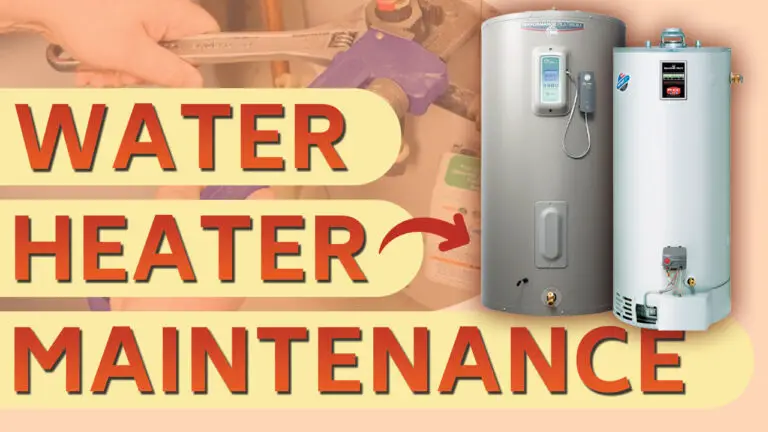Once per year is a good idea. If you have hard water, try to do it twice per year.
To be completely honest, most homeowners don’t ever drain their water heaters. Draining your water heater is meant to help reduce the sediment buildup that settles at the bottom of the tank. Sediment buildup can be responsible for corrosion on the bottom of the tank and can cause it to leak over time. If you regularly drain your water heater, you’ll likely be able to extend its lifespan a bit.
However! If your water heater hasn’t been drained in several years, don’t try to do it yourself!
You might find yourself dealing with rusty and corroded parts. This means you might open the drain valve and not be able to get it to seal again. Or you might open the drain valve and find that it is so blocked with sediment that it doesn’t drain at all. Or worse yet, you could even cause a leak in the tank itself.
But considering everything is in working order, draining a water heater is pretty simple.
- Shut the power off.
- For a gas-fired water heater, turn the gas valve off.
- For an electric water heater, turn the power off at the breaker.
- Shut the cold water supply off (this valve is located right above the water heater tank).
- Turn on hot water faucets in your home (this will help the water heater drain faster).
- Connect a garden hose to the drain fitting.
- Open the drain valve or drain screw
- Note *** the water coming out will be very hot!
- Open the relief valve (lift the tab).
- Wait for the tank to drain.
- Flush the tank by opening the cold water supply and letting it run until the water coming out of the hose is clear.
- Close the drain valve.
- Disconnect the garden hose.
- Turn the power back on.
- Relight the pilot light (directions are printed on the valve).
If that sounds like way too much work, you can simply stick a bucket under the drain and just drain out one or two buckets worth of water at the bottom of the tank to get most of the sediment out. It won’t be quite as effective as a full-system flush but it’s better than nothing. If you do this, remember: the water coming out of the drain is going to be VERY hot.


Download this FREE cheat sheet to find 28 tricks that can help you save on your electricity and heating bill each month.
Click here to get a FREE Cheat-Sheet
![How Long Do Water Heaters Last [Quick Answer]](https://homecaprice.com/wp-content/uploads/how-long-do-water-heaters-last--768x512.png)
![What Size Water Heater Do You Need? [Quick Answer]](https://homecaprice.com/wp-content/uploads/What-Size-Water-Heater-Do-You-Need_-Quick-Answer_URL-768x432.jpg)